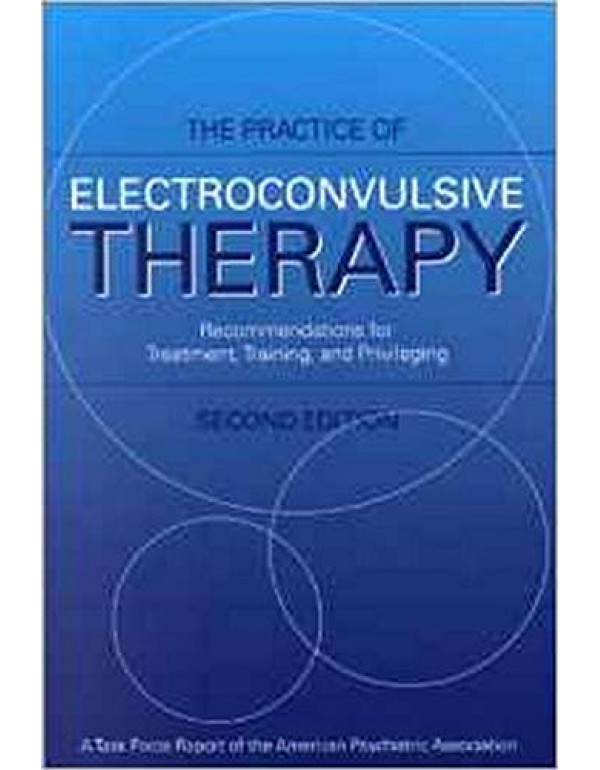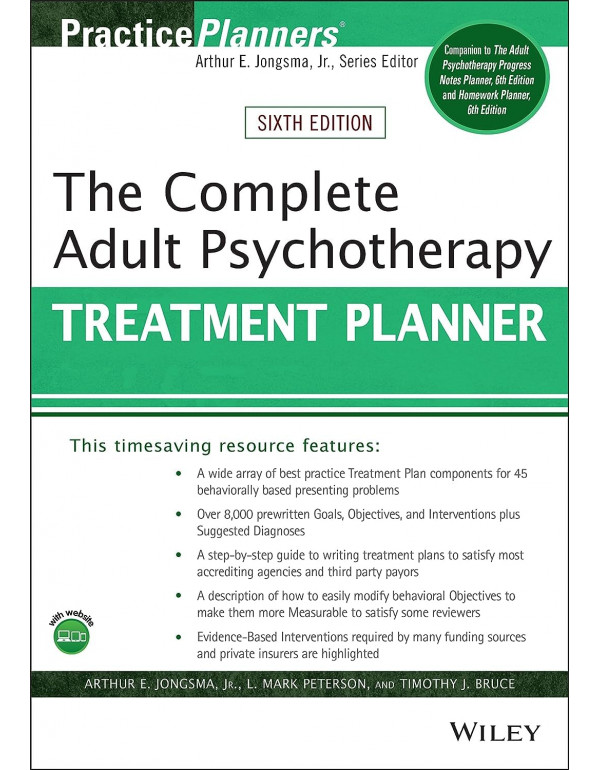- Type: Hardcover Book.
- Pages: 368
- Edition: 2nd ed.
The Practice of Electroconvulsive Therapy: Recommendations for Treatment, Training, and Privileging (Second Edition)
Author: American Psychiatric Association. Task Force on Electroconvulsive Therapy
Overview:
This comprehensive resource, published by the American Psychiatric Association (APA), serves as a clinical guide to electroconvulsive therapy (ECT). It emphasizes the proper use of ECT for severe mental illnesses and provides updated recommendations for treatment, training, and privileging of practitioners. This second edition reflects the latest scientific evidence and best practices in the field of ECT.
Key Themes:
- Clinical applications of ECT: Explores the use of ECT for treating severe mental illnesses such as major depressive disorder, bipolar disorder, and schizophrenia.
- Treatment guidelines: Provides detailed recommendations for patient evaluation, informed consent procedures, specific treatment parameters, and monitoring for potential side effects.
- Training and privileging: Establishes criteria and best practices for training mental health professionals in the administration of ECT.
- Ethical considerations: Addresses ethical issues surrounding informed consent, patient competency, and involuntary treatment with ECT.
Features:
- Second edition: Reflects the latest advancements and best practices in ECT.
- Evidence-based approach: Recommendations are grounded in current scientific research and clinical experience.
- Authored by experts: Developed by a task force of leading ECT practitioners and psychiatrists.
- Clear and concise writing: Provides a practical guide for clinicians who utilize ECT.
- Addresses ethical considerations: Offers guidance on ethical decision-making in ECT treatment.
Target Audience:
- Psychiatrists
- Other mental health professionals involved in ECT (e.g., anesthesiologists)
- Residents and fellows in psychiatry
- Medical students interested in learning about ECT
Strengths:
- Comprehensive and authoritative: Provides a single, reliable source of information on the use of ECT for treating mental illness.
- Clinically oriented: Focuses on practical guidance for safe and effective ECT administration.
- Up-to-date: Reflects current best practices and the latest scientific evidence.
- Addresses ethical considerations: Offers a framework for ethical decision-making in ECT treatment.
- Clear and concise writing: Makes complex information understandable to a broad audience.
Chapter Headlines: (Examples only, may vary in the actual book)
- Part I: Introduction and Overview
- Chapter 1: Introduction to Electroconvulsive Therapy
- Chapter 2: Historical Background and Mechanism of Action of ECT
- Chapter 3: The Neurobiology of Mood Disorders and the Rationale for ECT
- Part II: Clinical Use of ECT
- Chapter 4: Clinical Indications for ECT
- Chapter 5: Patient Evaluation and Selection for ECT
- Chapter 6: Informed Consent for ECT
- Part III: Treatment Considerations
- Chapter 7: The Electroconvulsive Therapy Procedure
- Chapter 8: Monitoring and Management During and After ECT
- Chapter 9: Maintenance Treatment and Relapse Prevention
- Part IV: Special Considerations
- Chapter 10: ECT in Children and Adolescents
- Chapter 11: ECT in Pregnant Women
- Chapter 12: ECT in Patients with Comorbid Medical Conditions
- Part V: Education, Training, and Privileging
- Chapter 13: Education and Training in ECT
- Chapter 14: Privileging for the Performance of ECT
- Part VI: Ethical Considerations
- Chapter 15: Ethical Issues in ECT
- Chapter 16: The Future of ECT
Closing Paragraph:
"The Practice of Electroconvulsive Therapy: Recommendations for Treatment, Training, and Privileging, Second Edition" serves as an essential resource for all clinicians involved in ECT. By providing a comprehensive and up-to-date guide to best practices, this book promotes the safe and effective use of ECT for patients suffering from severe mental illnesses.
 4.2 (10) Reviews
4.2 (10) Reviews


